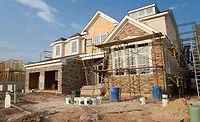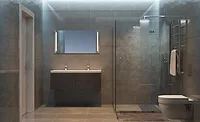New NAHB Index Finds Ongoing COVID-19 Pandemic is Causing Remodeling Activity to Slow
Concerns regarding the spread of COVID-19, combined with high unemployment and other factors, are reducing remodeling activity.

The National Association of Home Builders (NAHB) recently announced that it redesigned its Remodeling Market Index (RMI) in the first quarter of 2020 to ease respondent burden and improve its ability to interpret and track industry trends. The first reading for this new RMI series was 48.
“The impact of COVID-19 is visible in the remodeling industry,” said Tom Ashley, Jr., CAPS, CGP, CGR, NAHB’s Remodelers chair and a remodeler from Denham Springs, La. “The rate of inquiries coming in is slowing down because many home owners are wary of remodeling crews inside their homes.”
The new RMI survey asks remodelers to rate five components of the remodeling market as “good,” “fair,” or “poor.” Each question is measured on a scale from 0-100, where an index number above 50 indicates that a higher share of respondents view conditions as good than poor.
The Current Conditions Index is an average of three of these components related to the current market for: large remodeling projects, moderately sized projects, and small projects. The Future Indicator Index is an average of the other two components: the current rate at which leads and inquiries are coming in and the current backlog of remodeling projects. The overall RMI is calculated by averaging the Current Conditions Index and the Future Indicator Index. Any number over 50 indicates that more remodelers view remodeling market conditions as good than poor.
The Current Conditions Index averaged 58, with large remodeling projects ($50,000 or more) yielding a reading of 53, moderately sized remodeling projects (at least $20,000 but less than $50,000) at 59, and small remodeling projects (under $20,000) with a reading of 62. The Future Indicator Index averaged 39, with the rate at which leads and inquiries are coming in at 30 and the backlog of remodeling jobs at 47.
Because the old RMI series can no longer be used to compare with this quarter’s results, the redesigned tool asked remodelers to compare market conditions in their areas to three months earlier, using a “better,” “about the same,” “worse” scale. This index posted a reading of 24, indicating that many more remodelers thought conditions had become worse in the first quarter than thought they had become better.
“The low reading of 24 when comparing to the previous quarter is directly related to COVID-19,” said Robert Dietz, chief economist for the NAHB. “With unemployment increasing and leads decreasing, the economic impacts of the pandemic are evident in the remodeling industry.”
For more information, visit www.nahb.org/rmi and www.nahb.org/other/consumer-resources.
Looking for a reprint of this article?
From high-res PDFs to custom plaques, order your copy today!




